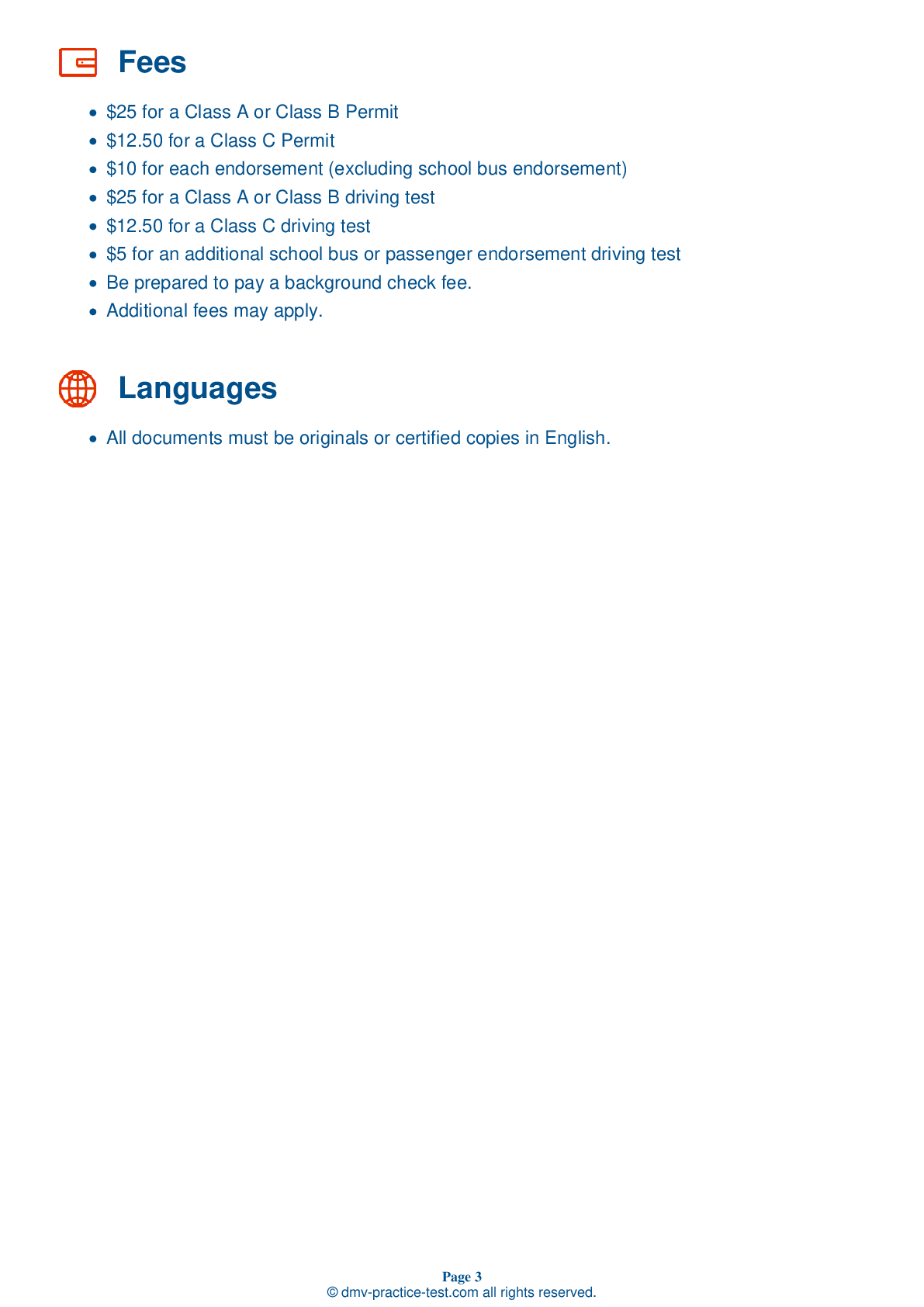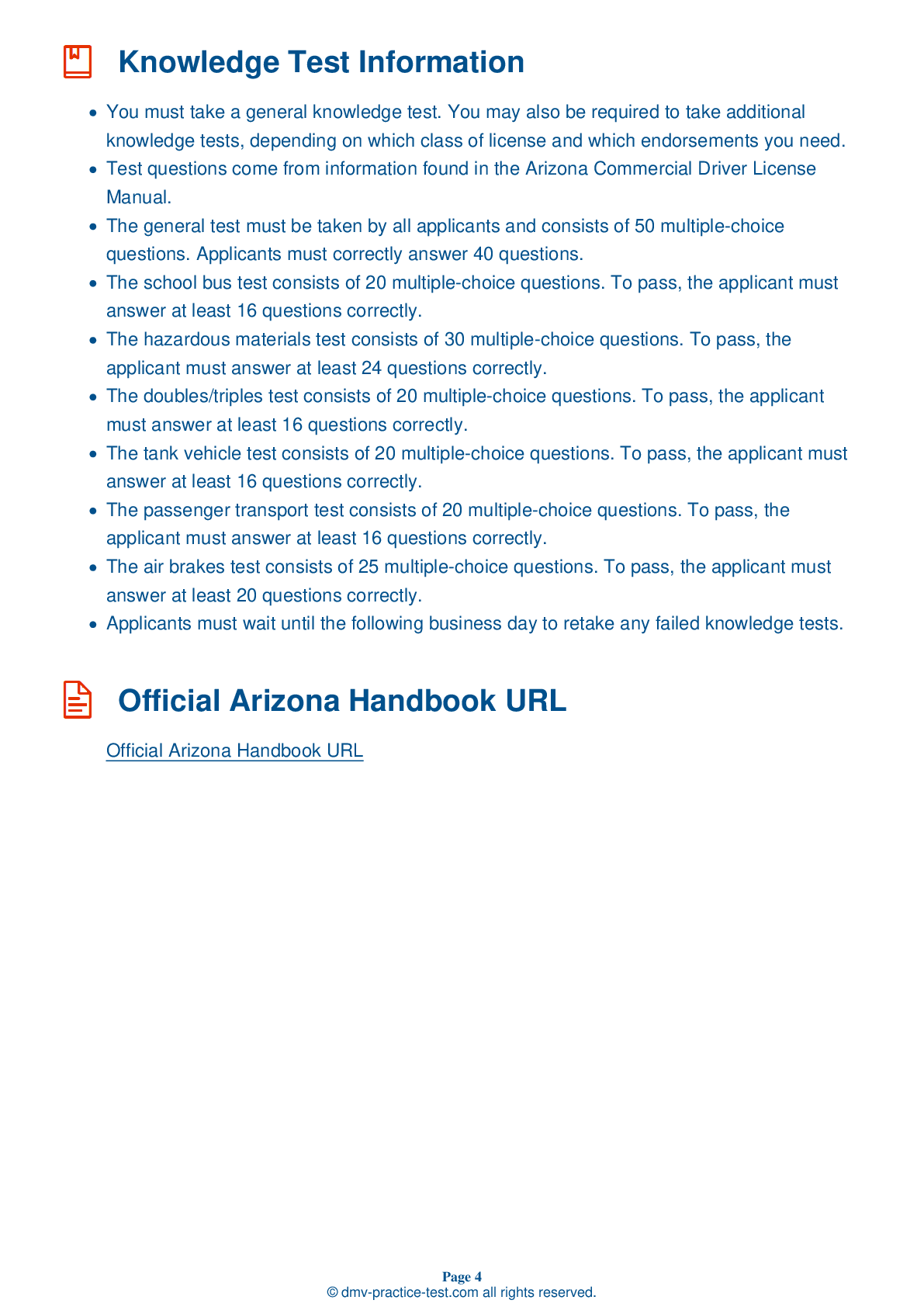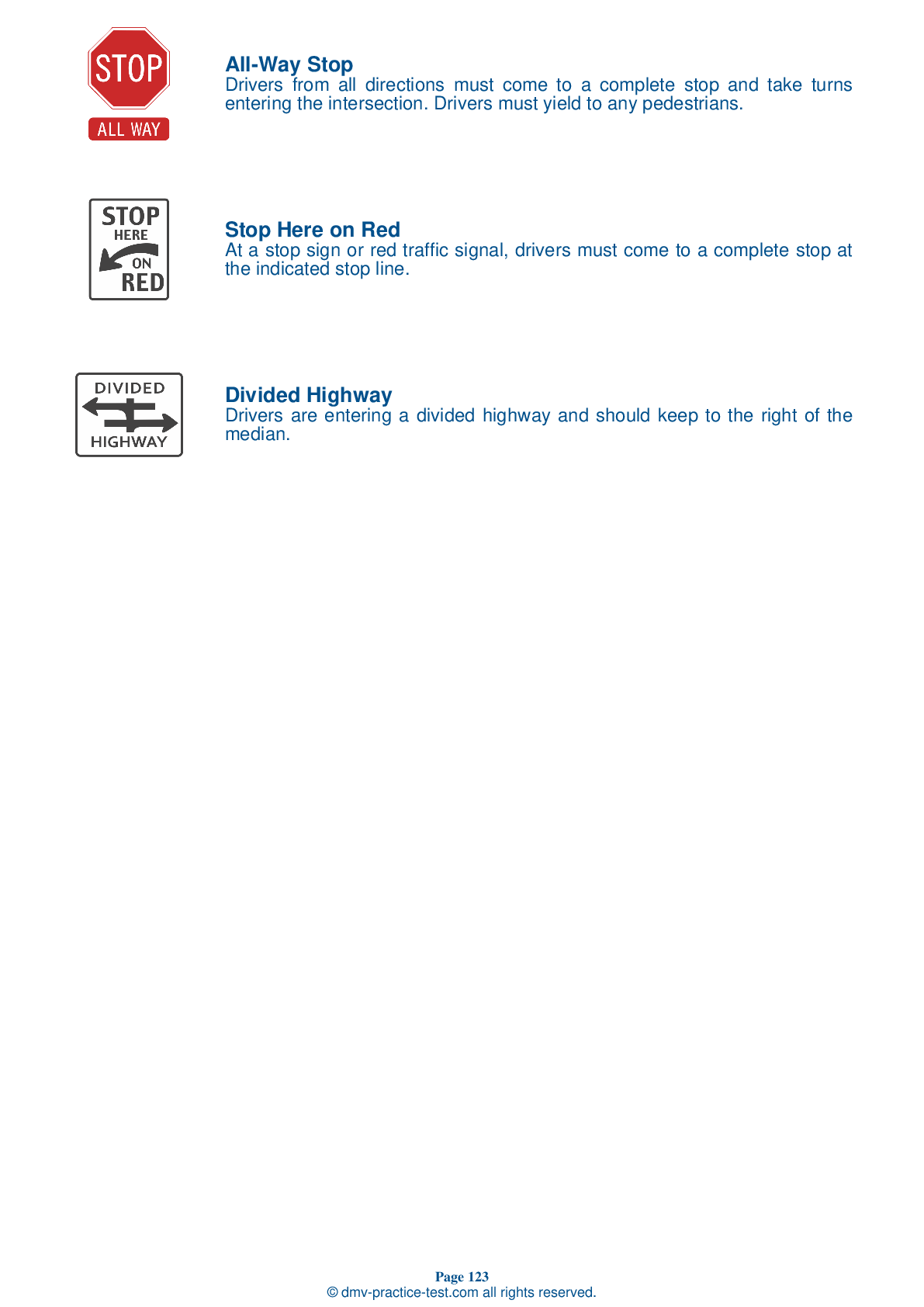Combination #2
Combination Vehicles Practice Test | Arizona 2025 #2
Train for FREE online with our Arizona CDL combination vehicle test. The official exam test consists of several obligatory parts, with all of them checking your knowledge of different blocks of road rules. If you need to obtain a AZ combination license in 2025, practice as much as possible. Free sample tests published on our website will help you check and improve your knowledge and boost your grades. Please bear in mind that DMV requirements for issuing a combination license may vary from state to state.
20
16
20
1 . If the emergency air line loses pressure:
The tractor protection valve keeps air in the trailer's braking system should the trailer break away or develop a leak. A loss of air pressure in the emergency line will cause the tractor protection valve to open and the emergency trailer brakes to activate.
2 . The tractor protection valve:
A tractor protection valve keeps air in a tractor or truck air brake system should the trailer break away or develop a bad leak. The valve will close automatically if the pressure drops to an unsafe level.
3 . Fully-loaded rigs:
Fully-loaded rigs are more vulnerable to rolling over than empty rigs because the weight of the cargo gives the vehicles higher centers of gravity.
4 . Older trailers are not equipped with spring brakes. This means that if the air supply for a vehicle's air braking system leaks away:
Older trailers do not have spring brakes. This means that if the air supply in an older trailer's air tank has leaked away, there will be no working brakes connected to the trailer and its wheels will turn freely.
5 . If a parked trailer does not have spring brakes, you should keep the trailer from moving by:
If a parked trailer does not have spring brakes, wheel chocks should be used to prevent it from moving.
6 . When coupling a trailer, you should:
When coupling air brake hoses, you should make sure the proper pairs of gland hands are connected. They are sometimes color-coded to help drivers avoid mistakes. Typically, blue is used for service lines and red is used for emergency lines.
7 . When coupling a trailer:
When coupling, make sure you couple matching glad hands. They are often color-coded to help drivers avoid mistakes. Typically, blue is used for service lines and red is used for emergency lines.
2025 Arizona | Frequently Asked Questions
A Commercial Driver's License (CDL) Class A in Arizona is a license that allows the holder to operate any combination of vehicles with a Gross Vehicle Weight Rating (GVWR) of 26,001 pounds or more, provided the towed vehicle is heavier than 10,000 pounds. It typically covers vehicles like tractor-trailers, truck and trailer combinations, and flatbeds.
A Class A CDL license in Arizona permits the holder to operate a variety of vehicles such as tractor-trailers, truck and trailer combinations, tank vehicles, livestock carriers, and flatbeds. The key criteria is that the vehicle or combination of vehicles must have a Gross Vehicle Weight Rating (GVWR) of 26,001 pounds or more, with the towed vehicle exceeding 10,000 pounds.
To obtain a Class A CDL license in Arizona, you must be at least 18 years old (21 for interstate driving), hold a valid Arizona driver's license, pass a vision exam, and successfully complete a written knowledge test. Additionally, you'll need to pass a skills test which includes a pre-trip vehicle inspection, a basic controls test, and an on-road driving exam.
In Arizona, you must be at least 18 years old to qualify for a Class A CDL license for intrastate driving (within Arizona only). However, if you plan to drive interstate (across state lines), or carry hazardous materials, you must be at least 21 years old.
Specific endorsements are not required for a Class A CDL license, but they can expand your driving opportunities. Endorsements like Hazmat (H), Tank Vehicle (N), Passenger (P), and School Bus (S) require additional tests. These endorsements allow drivers to operate special types of commercial vehicles or transport specific types of goods.
The Class A CDL skills test in Arizona encompasses three main parts. First is the pre-trip vehicle inspection, where applicants must demonstrate knowledge of the vehicle and its parts. The second part is a basic controls test, which assesses fundamental driving skills. The final part is an on-road driving exam, testing the applicant's ability to safely operate the vehicle in various traffic conditions.
Yes, there are limitations. A Class A CDL holder in Arizona can only operate vehicles they are specifically endorsed for. They must also adhere to federal hours of service regulations and maintain a logbook of their driving hours. Additionally, they cannot drive if their blood alcohol concentration is 0.04% or higher, which is stricter than the limit for non-commercial drivers.
Yes, it is possible. In Arizona, the written Class A CDL test is available in several languages besides English. However, federal regulations require that all commercial drivers demonstrate proficiency in English to ensure they can understand traffic signs, signals, law enforcement officers and emergency personnel. Therefore, you should have enough command of English for safety on the road.
Yes, you can request accommodations for the Class A CDL written test in Arizona if you have a disability. The Arizona Department of Transportation (ADOT) complies with the Americans with Disabilities Act (ADA) and provides reasonable accommodations such as providing a sign language interpreter, reader, or enlarged print. Contact ADOT's Civil Rights Office for more information.
Yes, you can retake the Class A CDL written test in Arizona if you don't pass on your first attempt. However, you must wait a minimum of one day before retaking the exam. If you fail three times, you'll need to pay a new application fee. It's recommended to study thoroughly to increase your chances of passing on the next attempt.



